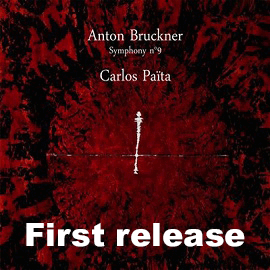Der ukrainische Pianist Dmytro Choni beginnt sein Programm mit Valentin Silvestrovs Bagatellen op. 1. Verglichen mit den Interpretationen von Hélène Grimaud ist Choni viel sensibler, feinfühliger und stimmungsvoller. Seine Aufnahmen bieten einen intimen Einblick in Silvestrovs nachdenklich-poetische Musiksprache.
Danach spielt Choni Franz Liszts Après une lecture du Dante. Ich habe den Pianisten schon mehrmals live in diesem Werk gehört, und diese Studio-Interpretation ist nicht weniger beeindruckend als das Liveerlebnis, das ich als technisch brillant in Erinnerung habe, spannungsgeladen und streckenweise direkt ekstatisch.
In erster Linie aus Improvisationsakten zustande gekommen und immer wieder revidiert, ist die Dante-Sonate eine Komposition mit paradoxen Zügen. Sie kohärent werden zu lassen, ist neben der Virtuosität wohl die größte Herausforderung für den Interpreten, der das Konzept des Phantasierens perfekt beherrschen muss.
Choni kann das, er kann das Werk hier wie live, mit packender Konzentration in einer hinreißend kohärenten Darstellung als emotionale Achterbahnfahrt darbieten.
Zwei fein nuancierte und ausdrucksvoll gespielte Debussy-Stücke führen zu den Gargoyles des amerikanischen Komponisten und Pianisten Lowell Liebermann (*1961). Gargoyles ist nach den Wasserspeiern von Notre-Dame in Paris benannt, ohne dass diese die Musik inspiriert hätten, denn der Titel kam als letztes, sagt der Komponist. Zu der Aufnahme der Gargoyles durch den Komponisten schrieb ich: « Aber passen tut er (der Titel) wirklich sehr gut. Die Musik ist spannend, pianistisch großartig und sehr ausdrucksvoll. Sie ohrvisuell mit den Gargouilles der Pariser Kirche zu verbinden fällt nicht schwer. »
Dmytro Choni mag im ersten Teil nicht ganz das packende Drängen von Liebermann erreichen, er spielt aber differenzierter und nuancenreicher, er gibt der Musik mehr Korpus. Das wird besonders im höllisch-dantesken Finale deutlich, das in seiner berserkerhaften Virtuosität total fasziniert. Chonis Sinn für Farben und Substanz kommt auch den ruhigeren Stücken zugute, die sehr stimmungsvoll werden.
Das Programm endet bedeutsam mit Silvestrovs tief bewegendem Postludium, in dem helle und düstere Farben eine dialektische Opposition von Trauer und Hoffnung schaffen.
Ukrainian pianist Dmytro Choni begins his program with Valentin Silvestrov’s Bagatelles op. 1. Compared to Hélène Grimaud’s interpretations, Choni’s are much more sensitive, delicate and atmospheric. His recordings offer an intimate insight into Silvestrov’s thoughtful and poetic musical language.
Choni then plays Franz Liszt’s Après une lecture du Dante. I have heard the pianist perform this work several times live, and this studio interpretation is no less impressive than the live experience, which I remember as technically brilliant, full of tension, and at times downright ecstatic.
The Dante Sonata is a composition of paradoxical characteristics, created primarily through improvisation and revised again and again. Besides virtuosity, the greatest challenge for the performer is to make it coherent, which requires a perfect mastery of the concept of fantasy.
Choni can do this, he can present the work here as he does live, with gripping concentration in a captivatingly coherent performance as an emotional roller coaster ride.
Two finely nuanced and expressively played Debussy pieces lead to Gargoyles by American composer and pianist Lowell Liebermann (*1961). Gargoyles is named after the gargoyles of Notre-Dame Cathedral in Paris, but the composer says they did not inspire the music, because the title came last. I wrote about the composer’s recording of Gargoyles: « But it (the title) fits very well. The music is exciting, pianistically great and very expressive. It is not difficult to associate it visually with the gargoyles of the Paris church. »
Dmytro Choni may not quite reach Liebermann’s gripping urgency in the first part, but his playing is more differentiated and nuanced, giving the music more body. This is especially evident in the hellishly Dantesque finale, which is utterly fascinating in its berserk virtuosity. Choni’s sense of color and substance also benefits the quieter pieces, which become very atmospheric.
The program ends significantly with Silvestrov’s deeply moving Postlude, in which bright and sombre colors create a dialectical opposition of sadness and hope.






















